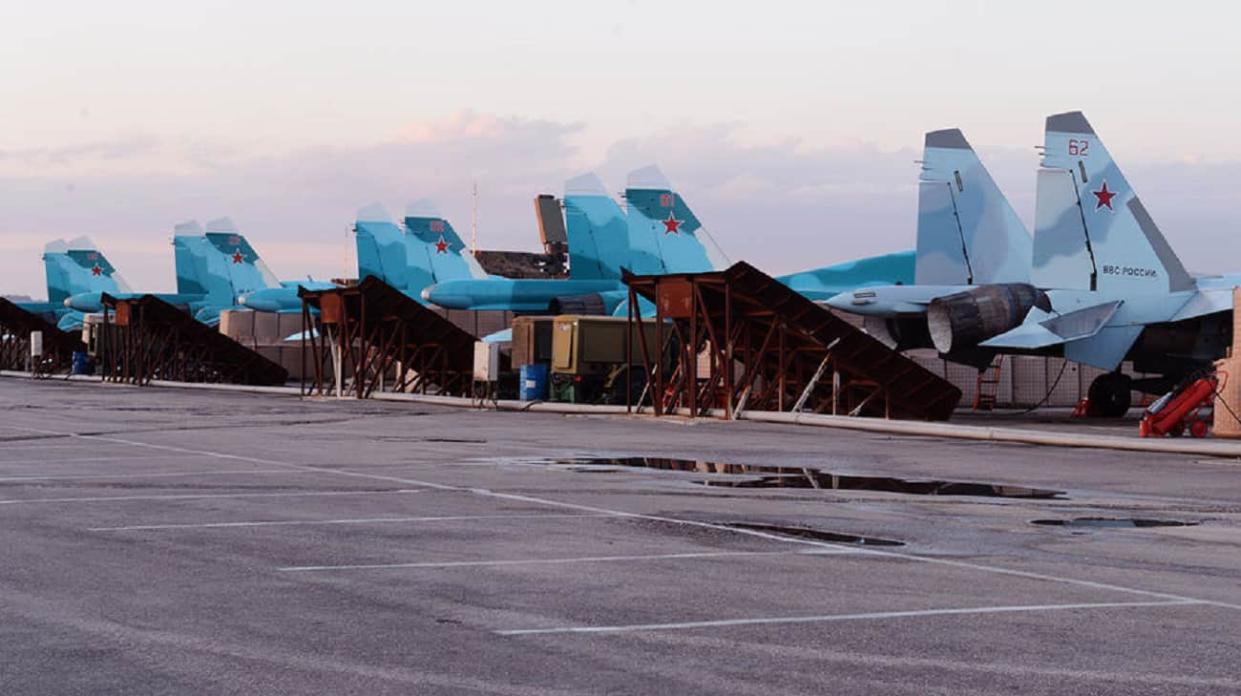ISW finds no visual evidence of Russian aircraft being hit at airbases

- Oops!Something went wrong.Please try again later.
ISW has yet to find any visual evidence that Ukrainian forces have damaged or destroyed aircraft or infrastructure at any of the four Russian airbases targeted by drones on the night of 4-5 April.
Source: Institute for the Study of War (ISW)
Details: Military analysts noted that geolocation footage showed explosions and response by Russian air defence systems near all airbases except the one near Yeysk.
Satellite imagery received on 4 April showed the following:
Three Tu-160 heavy strategic bombers, five Tu-95 strategic bombers, an Il-76 transport aircraft and a Tu-22 bomber at Engels airbase;
Ten L-39 trainer aircraft, five An-26 transport aircraft, an An-74 transport aircraft, an An-12 transport aircraft, four Su-27 aircraft, four Su-25 aircraft, one Su-30 aircraft, several Ka-52 and Mi-8 helicopters at Yeysk airbase;
Twenty-nine aircraft, mainly Su-34, at the Morozovsk airbase.
ISW also noted that Ukrainian drone strikes have typically only targeted individual airbases in Russia, and Ukraine's ability to strike four separate airbases in a single series of strikes is a significant increase in capability.
ISW believes that Ukrainian strikes on targets in Russia are a necessary component of the Ukrainian campaign to degrade the industries that support the Russian war effort and military capabilities.
Russian forces regularly use Tu-95 strategic bombers stationed at the Engels airbase to launch Kh-101/Kh-555 cruise missiles at Ukraine. And, as of 2023, the Russian military had approximately 60 Tu-95 aircraft. If confirmed, the possible loss of approximately 5% of Russia's Tu-95 strategic bombers in a single strike would be significant.
To quote the ISW’s Key Takeaways on 5 April:
Ukraine’s Security Service (SBU) and Ukrainian forces reportedly conducted one of the largest series of drone strikes against military facilities within Russia, targeting at least four Russian airbases, on the night of 4-5 April.
The recently intensified tempo of Russian offensive operations in Ukraine will likely result in increased manpower and materiel losses, but the Russian Ministry of Defenсe (MoD) appears to be successfully mitigating these losses.
Ukrainian Prime Minister Denys Shmyhal indicated that Ukraine is starting to staff new units, but that Ukraine needs further Western military assistance to properly equip them.
Shmyhal also reported that Russian missile and drone strikes have damaged or disrupted roughly 80% of electricity generation at Ukrainian thermal power plants (TPPs) in recent weeks, as Russian forces continue to exploit the degraded Ukrainian air defenсe umbrella in an effort to collapse Ukraine’s energy grid.
Ukrainian officials continue to warn that Russian forces are systematically and increasingly using chemical weapons and other likely-banned chemical substances in Ukraine.
An unattributed drone reportedly struck a military unit in the pro-Russian Moldovan breakaway republic of Transnistria on 5 April amidst an assessed ongoing Kremlin hybrid operation aimed at destabiliіing Moldova from within.
Russia reportedly has conducted thousands of cyber-attacks against Czechia’s rail transport infrastructure and that of other European states as part of a broader effort to degrade NATO members’ transport logistics since the start of Russia’s full-scale invasion of Ukraine.
Russian forces recently made confirmed advances near Avdiivka amidst ongoing positional fighting along the entire line of contact on 5 April.
Russia’s defenсe industry continues to mobilise to meet the Russian military’s needs in Ukraine.
Russian leader Vladimir Putin announced on 4 April that Russia will open two youth centres aimed at indoctrinating Ukrainian youth into Russian culture and historical narratives in occupied Zaporizhzhia and Kherson oblasts in the near future.
Support UP or become our patron!

